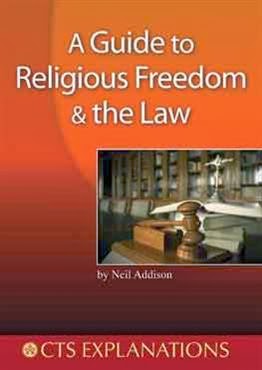This is a copy of an Article I had published in the January 10th 2014 issue of The Catholic Herald
The recent incident in which a naked woman from the protest group Femen interrupted Midnight Mass in Cologne Cathedral, by rushing on to the Altar with the words “I am God” written across her torso, is only the most recent example of an increasing tendency for “protesters” of various types to use churches as the setting for their provocations.
Femen have been involved in a number of protests in churches in Europe and on their website they have threatened retaliation the Catholic Church if the “protester” is prosecuted under the German criminal code, which makes it a criminal offence to disrupt a religious service.
The “protester” in Cologne was, quite rightly, arrested and is facing prosecution. This highlights the double standards of many in western Europe who criticised the prison sentences passed on the Russian Pussy Riot group while ignoring the fact that the group’s actions would have been illegal in any civilised country.
So far no Catholic church in Britain has experienced a Femen or Pussy Riot style disruption but reality would suggest that such an incident is only a matter of time. When same-sex marriage is legalised later this year it is likely that some gay rights activists will decide to organise a protest against the fact that such marriages will not be taking place in Catholic Churches. Disruption of a marriage
service in a church is a distinct possibility.
Besides protesters, churches may have to deal with other types of disruption. A little-reported incident took place in September 2013 when St Elizabeth and St Helens church in Coventry was invaded by a group which demanded that the worshippers leave because the church was being closed down under a court order. The “court” in question is the so-called “International Tribunal for Crimes of Church and State” which has absolutely no legal standing either nationally or internationally and which is the creation of a former United Church of Canada minister Kevin Annett.
Despite having no legal status the tribunal has solemnly sentenced Benedict XVI to 25 years imprisonment and ordered the closure and sequestration of the Catholic Church internationally. It has also “sentenced” Queen Elizabeth II and the Canadian prime minister to imprisonment and announced the dissolution of the government of Canada. Even though this “tribunal” is clearly operating at the furthest limits of lunacy some people were sufficiently influenced by it to cause disruption to the worshippers in St Elizabeth church, resulting in the police being called to deal with a group claiming to be international law enforcement officers executing a court order.
These and similar incidents are likely to increase in the future and it would be sensible if dioceses and individual parishes started thinking now how they would deal with such situations. The first point is to be quite clear that disruption of church services is a criminal offence under Section 2 of the Ecclesiastical Courts Jurisdiction Act 1860. In addition, it is likely to constitute a religiously aggravated public order offence. Any incidents should be reported to the police with a view to prosecutions being brought. People who disrupt churches are trespassers who can be physically removed from church buildings using reasonable force.
That said, churches need to think about the practical way such situations are dealt with and to have some form of contingency plan that avoids an undignified and possibly dangerous struggle on the altar between a priest and an enraged protester shouting at the top of their lungs and possibly willing to accuse anyone who touches them of indecent assault.
It may be sensible for local priests to speak to their local police commanders or community officers to discuss the possibility of such situations arising and to get their advice. Many parishes will have parishioners who have had experience in the Armed Forces or police who might be willing to be the “designated person” to remove disrupters in the most efficient manner should that ever become necessary. Female parishioners who have Forces or police experience could be particularly useful “ecclesiastical bouncers” to deal with disruptive females.
After all, Christ did use physical force to drive out those who were disrupting the holiness of the Temple in Jerusalem and perhaps we could do with a restoration of the idea of muscular Christianity as an antidote to the notion of “gentle Jesus meek and mild” which has so emasculated Christians in the last few decades.
In any event, dioceses should start thinking about the possibility of disruptions now cathedrals are particularly liable to be the targets for protests because of their public and media profile, and it makes no sense for a bishop or priest to wait until a naked protester is hurtling across the altar before thinking: “How should I deal with this situation?”



No comments:
Post a Comment